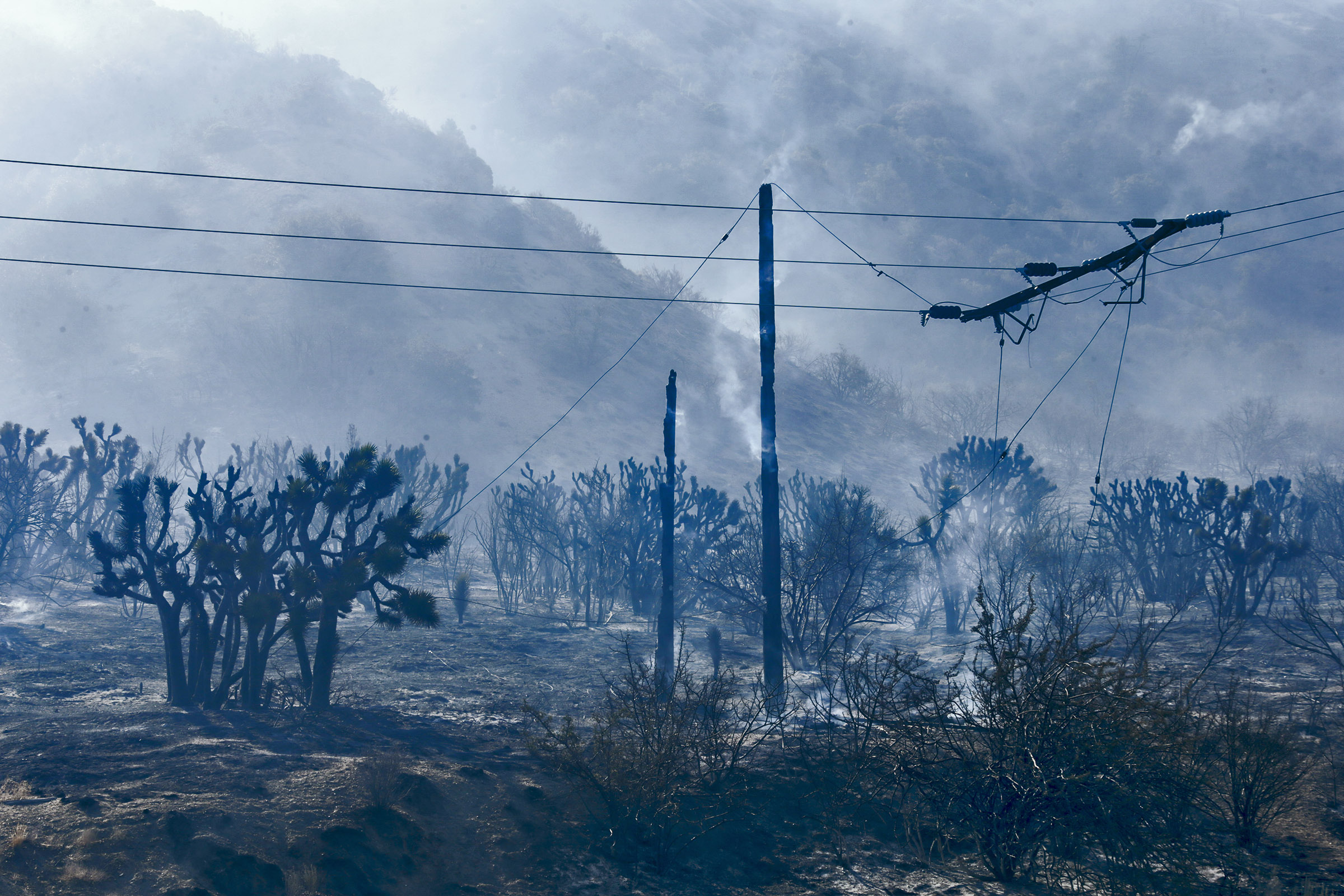Wildfire Victims Don’t Have Cell Service Thanks to Greedy Telecoms

Credit to Author: Karl Bode| Date: Tue, 29 Oct 2019 19:33:18 +0000
The California wildfires and PG&E’s incompetence are having a terrifying impact on the residents of California, who face not only immense risk to life and property, but a growing number of power and telecom-related outages that make a bad problem worse.
There are more than a dozen wildfires currently raging across California, and heavy winds this week are only expected to exacerbate the problem. PG&E plans to cut power to more than half a million California residents this week as the ill-prepared company attempts to mitigate harm caused by its antiquated infrastructure.
The fires and power outages are also having a profound impact on the state’s telecom networks. According to data released by the FCC, 874 of the state’s 26,000 cell sites were out on Monday, up from 630 on Sunday. Given the majority of these sites have no backup power, they’re useless once fire or PG&E’s rolling blackouts come knocking.
"Nobody likes to pay for emergency preparedness."
In Marin County, more than half of the area’s cell sites simply aren’t working, making it a nightmare to contact emergency services or confirm the well being of loved ones. In Sonoma county, where the Kincaid fire has consumed 66,000 acres and growing, 17 percent of cellular tower sites are inoperable.
In addition to cellular and power outages, the FCC says that 454,722 subscribers with landline phones, cable television, or broadband service have also lost service courtesy of fire damage or power outage. Four FM and two AM radio stations have also been forced offline.
While climate change and wildfires are an unavoidable modern reality, PG&E has been widely criticized for failing to adequately maintain its aging infrastructure. The same problem has historically plagued the telecom sector, where companies routinely neglect aging infrastructure despite billions in taxpayer subsidies, tax breaks, and regulatory favors.
In California, the lack of backup power at cellular sites are causing more problems than the fire itself. Of the 874 California cell tower reported by the FCC, 702 were caused by a loss of power to the cell site. 88 tower outages were caused by cuts to the fiber lines feeding cell towers, and 60 were caused by actual wind or fire damage.
This could have been avoided; efforts to mandate backup power at cell sites have routinely been attacked by the telecom industry. In response to widespread cellular outages caused by Hurricane Katrina, the FCC in 2008 approved new rules requiring that all cell tower sites have at least 8 hours of battery backup in the case of a power outage.
Backed by the Bush White House, the cellular industry quickly lawyered up and scuttled the rules, claiming they would have created “a huge economic and bureaucratic burden” for industry.
Sprint, currently lobbying for government approval of its $26 billion merger with T-Mobile, proclaimed at the time that the arguably-modest FCC backup power rules would have resulted in “staggering and irreparable harm” to the company. In short the U.S. wireless industry, which charges some of the highest rates in the world, didn’t want to pay for tower upgrades.
The industry’s successful bid to dismantle those rules would come to haunt victims of Hurricane Sandy in 2012, and now it’s California’s turn.
“Nobody likes to pay for emergency preparedness,” Harold Feld, a wireless policy expert and lawyer at consumer group Public Knowledge told Motherboard. “That's why you need rules to force companies to spend the money. Companies will spend as little as they think they have to, which is why regulators need to tell them how much they have to spend.”
Ernesto Falcon, a lawyer and telecom expert at the Electronic Frontier Foundation, told Motherboard the telecom industry has also fought efforts by the California Public Utilities Commission (CPUC) to not only mandate backup power for essential telecom gear, but ensure consumers aren’t unfairly billed during emergency outages.
He notes that the telecom industry backed a California law in 2012 making it harder for the CPUC to regulate VoIP or IP based services. As California has attempted to shore up public safety requirements, giants like Comcast and AT&T have fought tooth and nail to derail those efforts as they try to eliminate state and federal oversight of telecom.
“I think 2020 will be a very busy year at the state regulator to promote public safety rules over the telecom industry,” Falcon said. “This fire season and the number of people that had to be evacuated and rely on mobile devices for everything furthers the need to examine what works and address what is not working for people.”
Leo Fitzpatrick, a lawyer at consumer group Free Press, says the FCC has a long history of letting industry self-regulate when it comes to disaster preparedness. The result is the widespread recovery failures seen in the wake of the government’s response to hurricanes Irma and Maria, which fataly ravaged Puerto Rico in 2017.
“After Hurricane Katrina and Superstorm Sandy, both Congress and the FCC took a hard look at widespread outages,” he said. “Instead of issuing a regulatory regime to address the identified vulnerabilities, such as a recommendation to require backup power on cell towers which carriers fiercely resisted, the FCC punted and put its faith in a voluntary regime devised by the industry.”
Experts say the end result is disasters that have a much broader impact than they otherwise would have, and recovery efforts that are often hampered by incomplete data.
It’s hard to not see the tragedy unfolding in California a foreshadowing of the decades to come, where climate change, private company incompetence, and regulatory capture combine to create entirely new, terrible outcomes greed has left us clearly ill-prepared for.
This article originally appeared on VICE US.